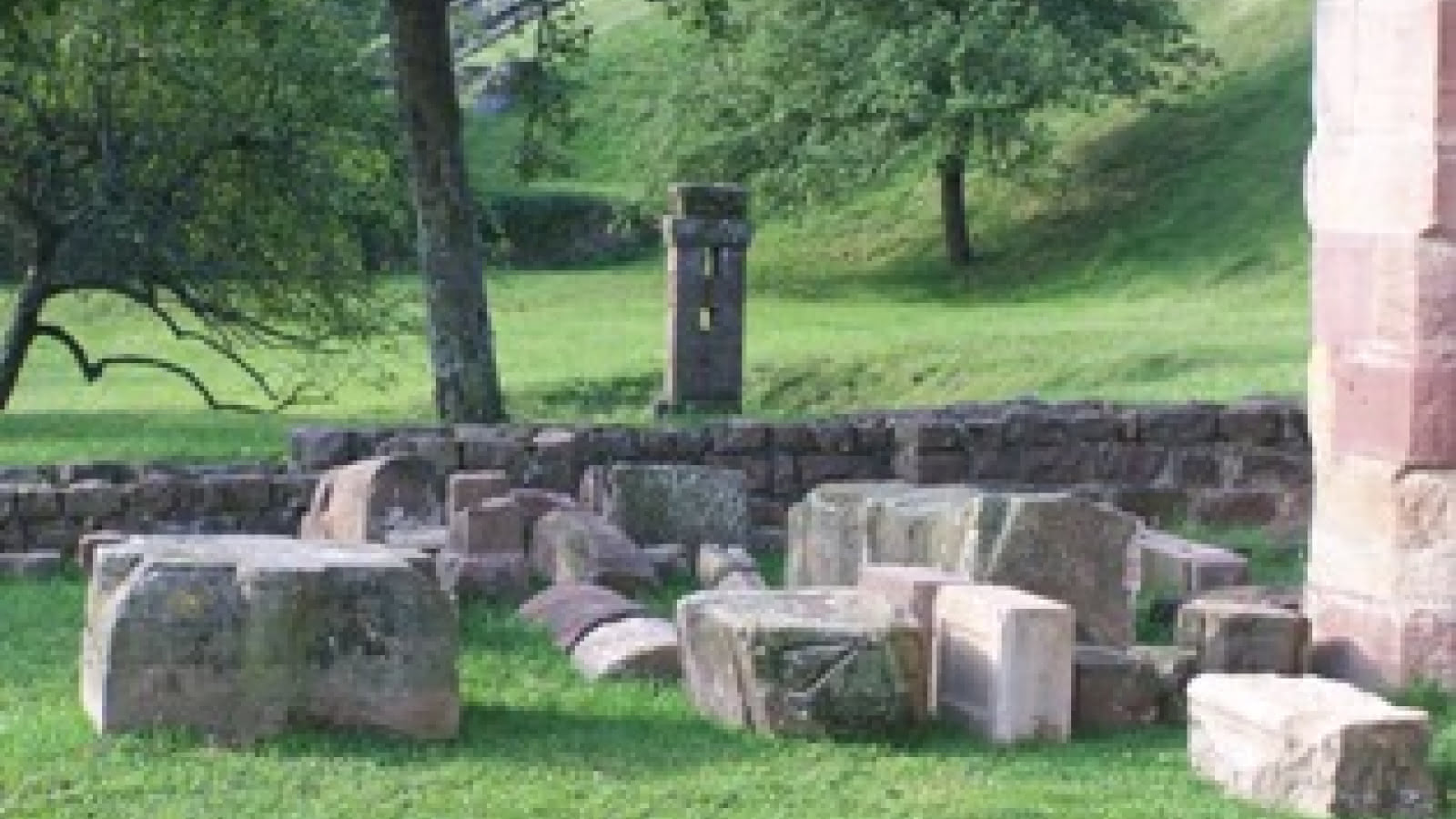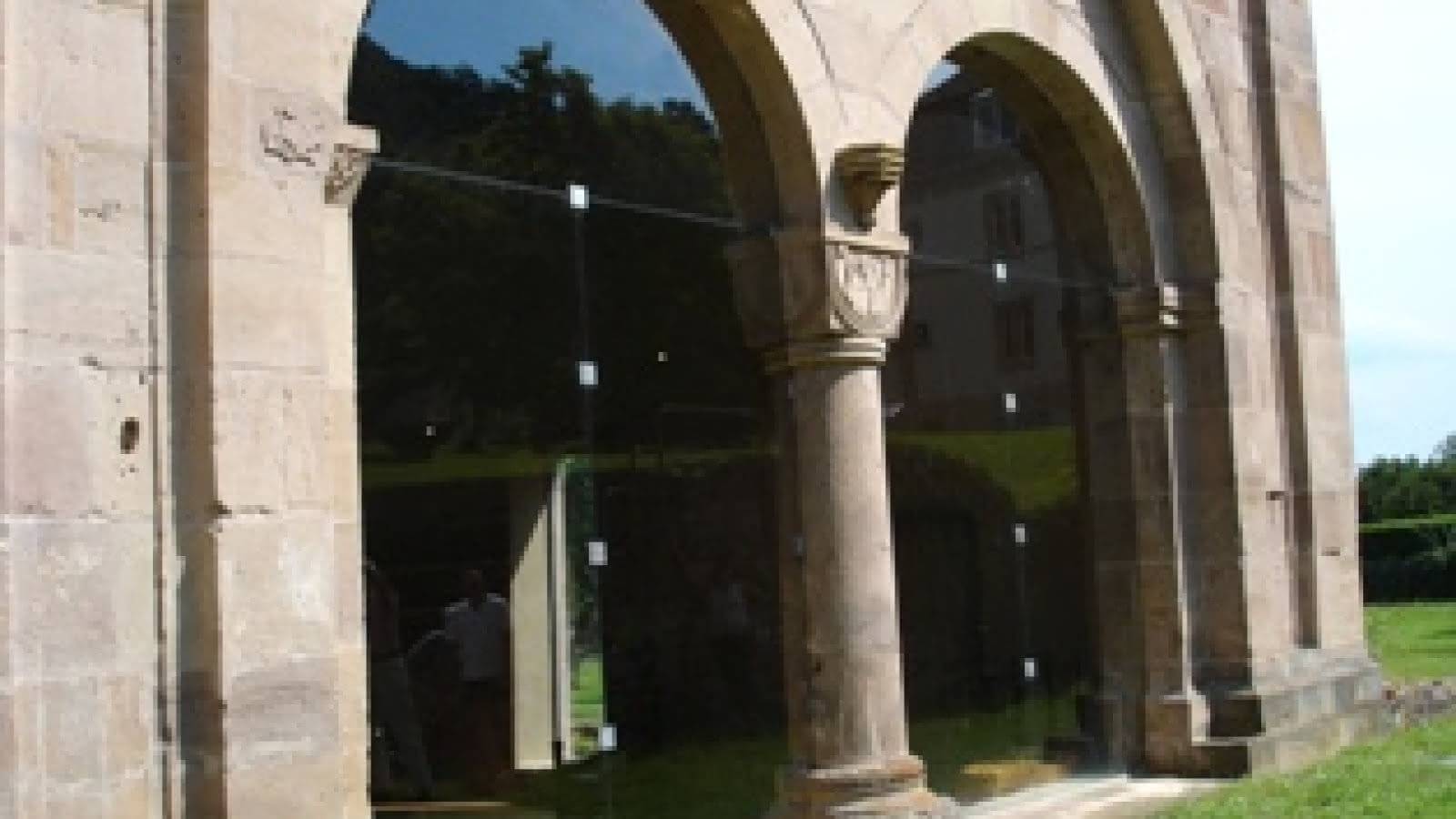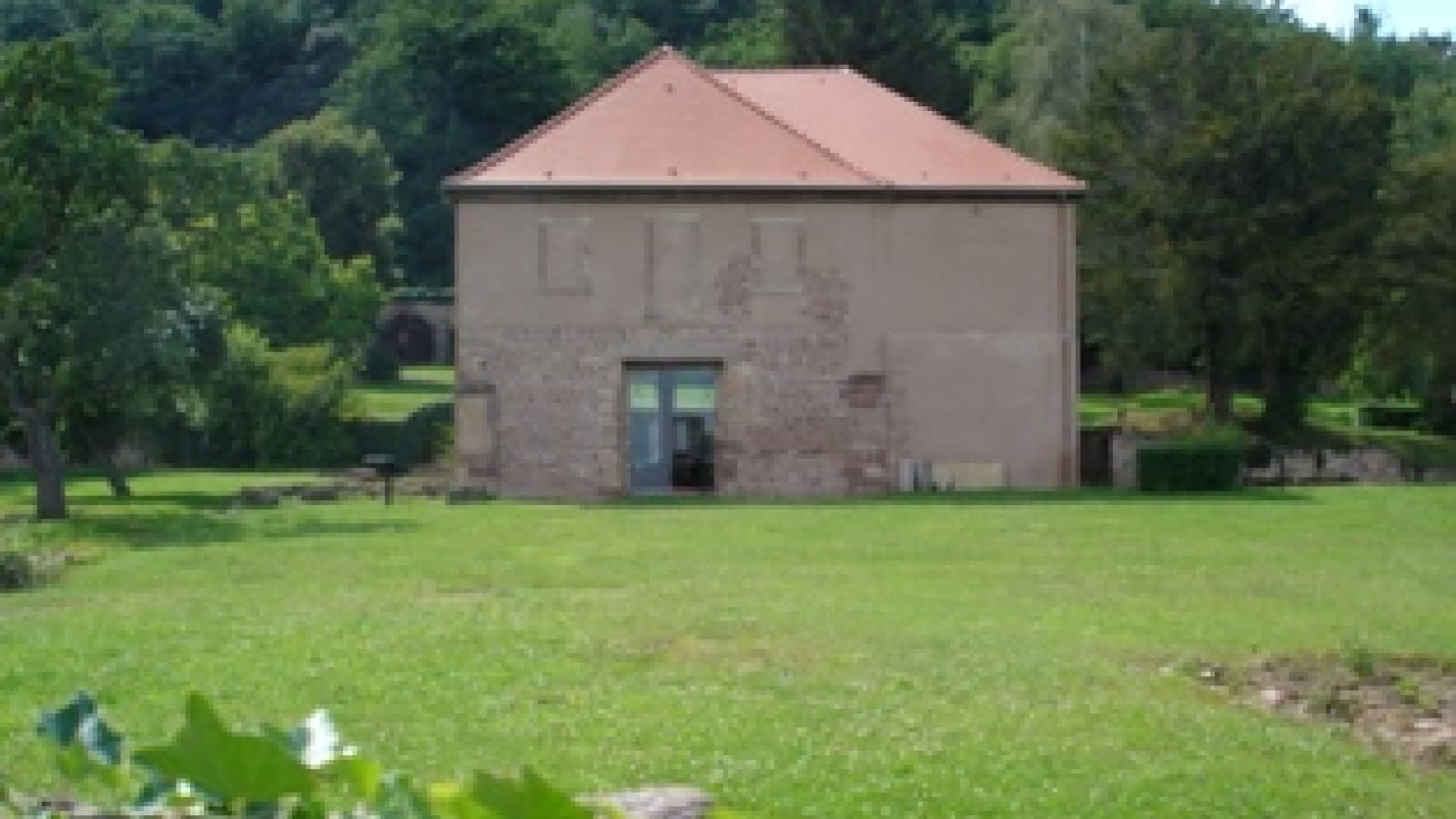Marbach Abbey
" 
The Abbey, founded in 1089 by the knight Burckard of Gueberschwihr, was partially destroyed during the Revolution, and completely demolished in 1791.
According to legend, in around 1060, tired during a day’s hunting, the knight was resting in a flowered meadow near a little stream: the Marbach. In his dreams, he had a vision that Jesus, the Virgin Mary and St Augustine appeared and ordered him to found a monastery in their honour in that very same place.
He undertook the construction himself, donating the greater part of his personal fortune. The Counts of Eguisheim followed his example and made rich donations to the new monastery.
The first buildings were the chancel of the church and the St Augustine chapel. This square construction, with a single nave and a semi-circular apse, was the first to be consecrated, while the final addition, the ample Narthex was only completed between 1130 and 1140.
Burckard appointed Manégold, dean of Rottenbach abbey in Upper Bavaria (Germany) as head of the new monastery.
Manégold requested admission to Lautenbach convent in Alsace in 1080, where in 1084 he wrote a text defending the rights of the Pope and criticizing the rights claimed by the Emperor to nominate prelates. As a result, the Emperor Henry IV pillaged the entire Lautenbach valley and destroyed the monastery. Manégold had to hide in the mountains, before being welcomed as a hero to Rottenbach abbey in 1085.
In 1094, he returned to Alsace at the call of Burckard of Gueberschwihr. In 1096, Pope St Urban II gave his benediction to the Marbach monastery, referring to Manégold as his “friend”, giving him the power of absolution, and from then onwards, the faithful flocked to Marbach from all parts.
Henry IV took revenge by sending troops to Marbach in 1098; they managed to capture Manégold who was kept a prisoner until 1103. He died suddenly a 24th January but it is not clear in exactly which year.
In turn, Burckard died in 1120, aged 90, and was buried in the abbey, near the main altar.
Placed under the protection of Emperor Frederick Barbarossa in 1153, Marbach abbey enjoyed a remarkable expansion:
On the one hand, the illumination workshop produced masterpieces among which the best known is the “Codex Guta Sintram” written by canoness Guta of Schwartzenthann and illustrated by the illuminations of canon Sintram of Marbach. This piece served essentially to rhythm the daily life of the canonesses who gathered every morning in the capitulary room after Mass.
On the other hand, Marbach was at the origin of new foundations not only in Alsace but also in the Danube basin and in Austria.
By 1220, Marbach was a splendid edifice, more than 65 metres long and 20 metres wide, one of the most impressive churches in the area, a veritable “Cluny of Alsace”.
The abbey was burned down 4 times and was pillaged and vandalised more than 10 times.
In 1506, the St Augustine chapel was rebuilt in the Gothic style of the period and consecrated in 1509.
The peasants’ revolt that broke out in 1525, and the Thirty Years war, fatally weakened the abbey.
In 1791, the abbey was sold at auction. A change in ownership caused the demolition of the buildings and the sale of the stones as construction material. Between 1809 and 1830, the church, the cloister and both towers disappeared as well.
Today, of the original abbey, only the Narthex or “Paradise” remains, with its three wonderful Roman arcades dating from 1152 which were saved and partially restored in 1992. The porch from 1490 and the rampart wall finished in 1496 are also still visible.
Today, the former abbey is home to the Auguste Biecheler Medical-Educational Institute.
- Pets allowed : yes
- Altitude : 350m
- Distance to the nearest station (km) : 10km
- Prices :
- Adult rate : 0€
- Type of visits proposed : Free visit




